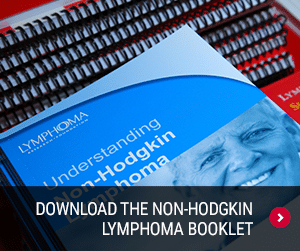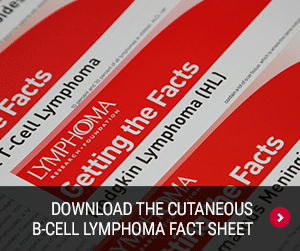
What is Lymphoma?
Cutaneous B-Cell Lymphoma
When extranodal lymphomas originate in the skin (comprising 18 percent of all extranodal lymphomas and five percent of all NHLs) and there is no evidence of disease outside of the skin, they are called primary cutaneous lymphomas. Primary cutaneous B-cell lymphomas (CBCLs) occur when the lymphoma cells originate in B lymphocytes.
CBCLs are most often indolent (slow-growing). They may appear on the skin as a reddish rash, lump, or nodule and may have a slightly raised and smooth appearance. The disease tends to recur (return after treatment) in new places on the skin, but it rarely develops into a disease that affects other areas of the body. Nearly 50 percent of patients diagnosed with CBCL experience a recurrence after an initial complete response to treatment. Prognosis is usually very good.
Subtypes of CBCL
There are four types of CBCL:
- Primary Cutaneous Follicle Center Lymphoma: These skin lymphomas develop slowly over months or years and usually appear on the head, neck, or torso of the body as a red-brown bumpy rash or nodules.
- Primary Cutaneous Marginal Zone B-Cell Lymphoma: This slow-growing lymphoma is the second most common form of CBCL and appears as pink or red lesions, nodules, and/ or tumors, most commonly found on the torso or arms.
- Primary Cutaneous Diffuse Large B-Cell Lymphoma, Leg-Type: This lymphoma usually appears as solitary or multiple tumor nodules on the legs, arms, and/or torso and is less common but usually more aggressive (fast-growing), developing over weeks or months.
- Primary Cutaneous Diffuse Large B-Cell Lymphoma, Other: This describes a group of very rare lymphomas, including intravascular large B-cell lymphoma, T-cell–rich large B-cell lymphoma, plasmablastic lymphoma, and anaplastic B-cell lymphoma that usually appear on the head, torso, and extremities.
To learn more about CBCL, download the Cutaneous B-Cell Lymphoma Fact Sheet.


